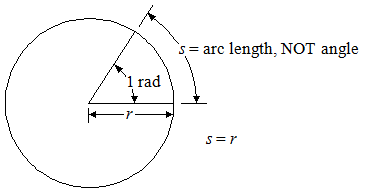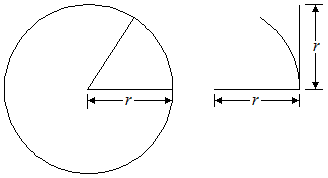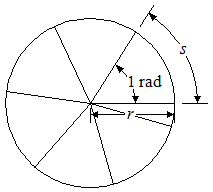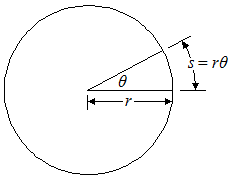
In describing rotational motion, the most natural way to measure the angle θ is not in degrees, but in radians. As shown in the figure, one radian (1 rad) is the angle subtended at the center of a circle by an arc with a length equal to the radius of the circle. In the figure, an angle θ is subtended by an arc of length s on a circle of radius r.

If the arc length s is flattened, it would measure as the same linear length as r.

There are 2π, or about 6.283, radians in one revolution of a circle.
